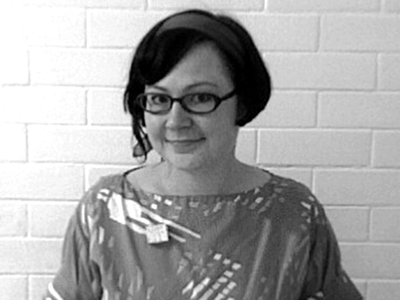By Example: Australian Contemporary Jewellery is part of a series of international jewelry exhibitions hosted biannually by the Museum of Arts & Crafts in Itami, Japan. The Itami Cultural Foundation and the City of Itami have made jewelry an integral ‘pillar’ in their community development. Not only do these exhibitions work to broaden the audience for contemporary jewelry but also, according to the organizers, they are a way to foster cultural understanding. Previous countries featured in this series include Norway, Germany and the United Kingdom. With the invitation extended to Australia, it was a chance to present an ever-growing Japanese audience with a fresh look at the diversity of Australian contemporary jewelry practice. The legacy of this exhibition is the requisite catalogue, which serves as its central documentation.
This publication is prefaced by the Australian Ambassador to Japan, Murray McLean and an additional foreword is posed collectively by The Museum of Arts and Crafts-ITAMI, The Itami Cultural Foundation and the City of Itami. Both texts are full of general niceties and touch lightly on formal governmental agendas, speaking of the importance of cultural exchange and the hope for a collaborative and ongoing dialogue between the two countries. Australia’s cultural and economic links to Japan have been fairly strong and amicable and it seems the history of jewelry exchange has been rather similar. Some of Australia’s leading contemporary jewelers have migrated from Japan and traditional Japanese metalworking techniques are often taught in Australian institutions.
The Australian curators, Karin Findeis and Bridie Lander, summarize the premise of this exhibition quite efficiently. ‘By Example presents a view of Australian contemporary jewellery through the lens of the process of learning.’ Fourteen renowned contemporary jewelers, each still active in the field, were invited to take part in the exhibition and asked to select two makers with whom they have worked, mentored or formally taught in the past. The choice of ‘mentors’ not only includes jewelers from formal institutions such as universities and TAFE but from private studios and workshops, as well as a gallerist.
The major catalogue essay by Grace Cochrane, Australian’s version of decorative arts royalty and author of the seminal book The Crafts Movement in Australia: A History (UNSW Press, 1992) is informative and well written. She begins with the importance of relationships, of learning by example and of the bond we forge with people who become our mentors. It is nice to see she does not shy away from the fact that examples can be both good and bad and notes that ‘Criticism can be destructive, but it is usually true that “flattery gets you nowhere”.’ She touches on the traditional guild mentality and how craft apprenticeships in Japan survived the industrialization of the twentieth century. As a result, from the 1960s onwards, visitors from Australia, interested in this method of learning/teaching, traveled to these Japanese craft workshops and observed the immense respect held for the great masters as well as their top students. Cochrane then provides a very brief account the formalised/institutionalized support of craft in Australia. Tracing the history of cultural traditions from indigenous Australians through to 1973, when the Australian Council for the Arts was formed and further to 1980 when Jewellers and Metalsmiths Group of Australia (JMGA) was founded, she suggests that it was in the 1980s that a significant change occurred in ‘attitudes and values to do with the concepts of art, craft and design, maker and user, self and society, function and expression, ideas and skills, materials and tools,’ Jewelers were influential in this push. She concludes with a short summary of pervious cultural exchanges between the Japan and Australia over the past three decades. Not only do the relationships between the countries exist, she concludes, but also the openness for opportunities that arise from such exchanges is exciting and inevitable.
With a total of 42 jewelers represented in the exhibition, you would be forgiven for thinking that this catalog might be a little overwhelming. It is perhaps slightly over-complicated in its graphic design. However, I believe that this is mainly due to the text having to be translated into both English and Japanese. Each jeweler is given a short paragraph to speak about their work, with an additional short text written by the mentors about their choice of students. It is disappointing that there wasn’t more space or time given to this particular aspect of the project, as it is pitched as the crux of exhibition. None of these texts feel very satisfying, as they speak more to why the students where chosen, rather than addressing how the learning/teaching process occurred. How did they learn from one another? What was the process of learning? How will it continue to evolve? Also missing is the students’ voices. Only the mentors, it seems, were asked to contribute an opinion. It would have been valuable to hear both sides and would certainly focus the publication more directly on the issue of the process of learning. The layout of the catalog – each mentor receiving a full-page image, with the images of the jewelers they nominated on the opposing page – allows the reader to observe how the relationships play out. This is most noticeably in terms of aesthetic style, technique and/or materials, although texts by the ‘students’ about the relationship would allow the reader to see what the relationship is like at the level of concepts and ideologies.
Although I don’t think this catalog delivers on the premise it sets out to achieve, to give a ‘view of Australian contemporary jewellery through the lens of the process of learning,’ it is filled with a wealth of information and offers a great reference to a diverse and varied selection of Australian contemporary jewelry.





